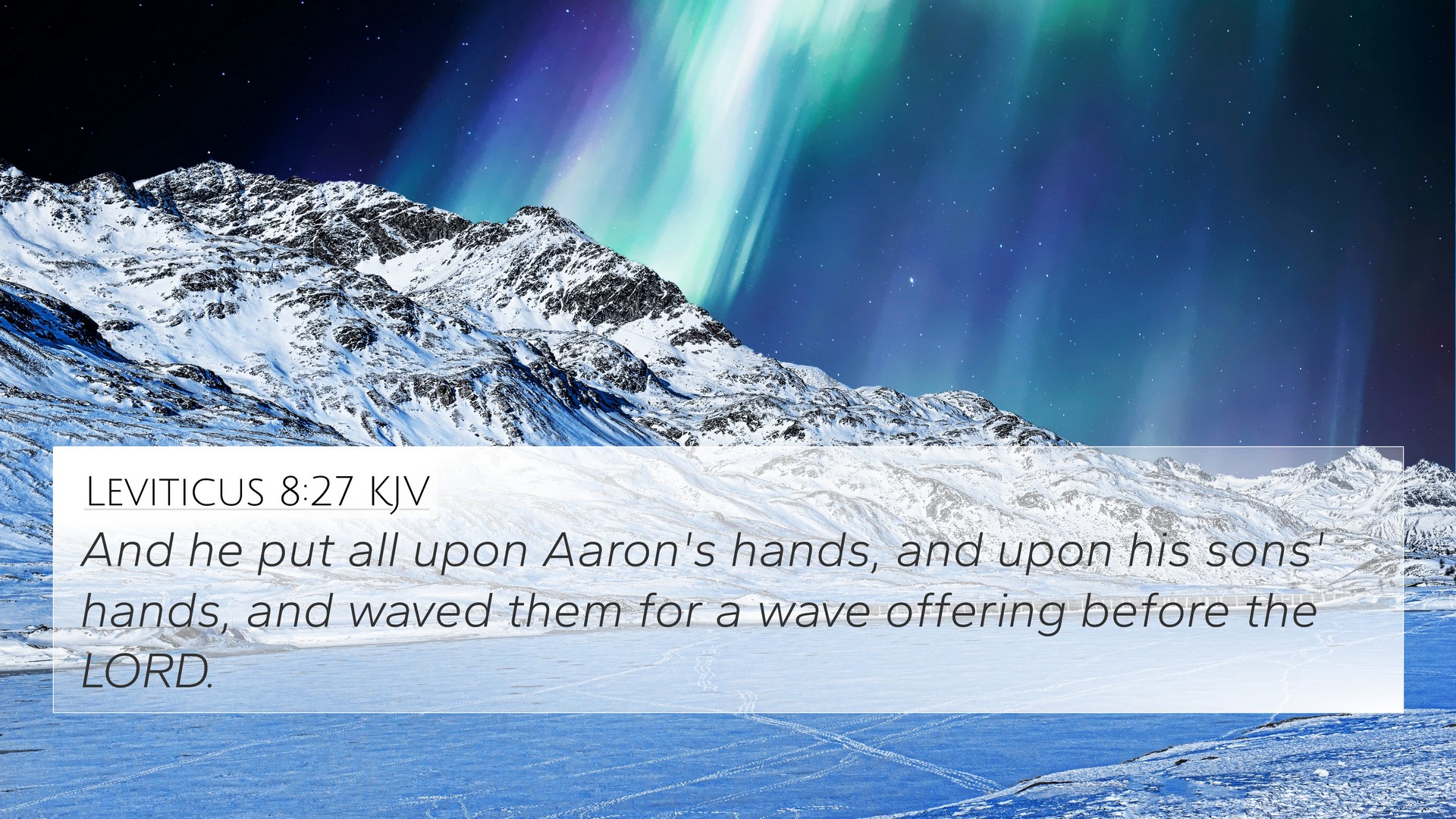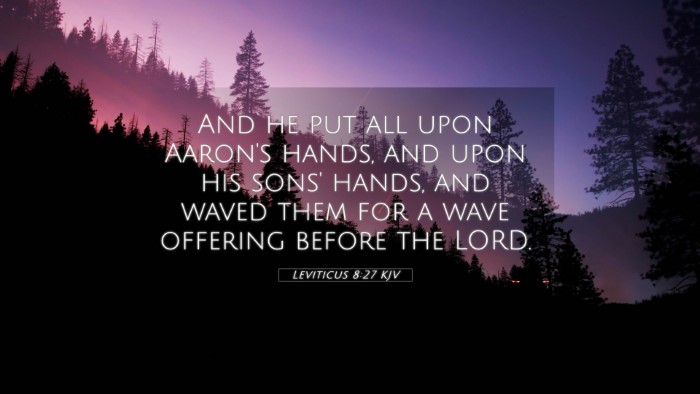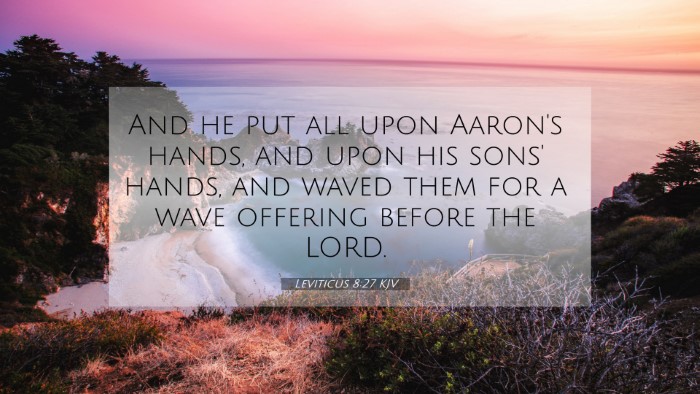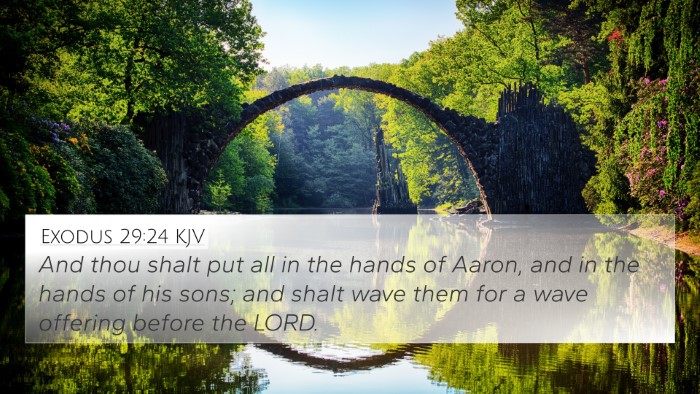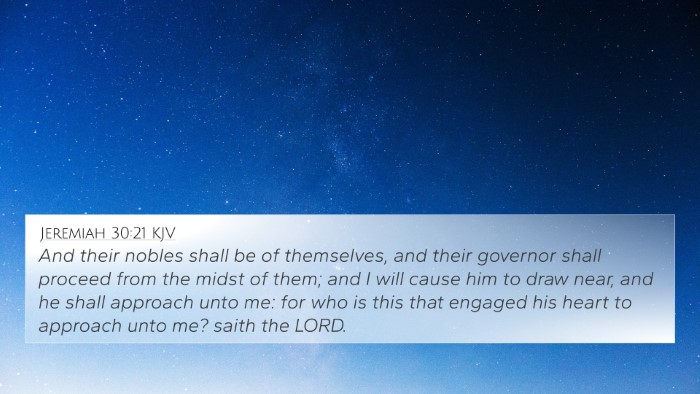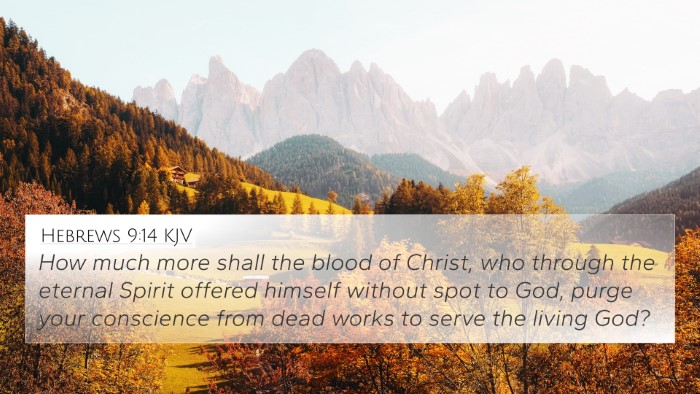Bible Verse Meaning of Leviticus 8:27
Leviticus 8:27 reads: "And he put all upon Aaron's hands, and upon his sons' hands, and waved them for a wave offering before the Lord." This verse highlights significant aspects of priestly consecration and the importance of offerings in the Mosaic Law. Below, we explore the meaning of this verse through insights gathered from renowned public domain commentaries.
Significance of Wave Offerings
The act of waving the offerings shown in Leviticus 8:27 serves a crucial purpose in the sacrificial system outlined in Leviticus. Waving represented a presentation of the offerings to God, symbolizing the people's acknowledgment of God’s sovereignty. It connects the physical offerings with divine acceptance, a theme elaborated upon by Matthew Henry.
Albert Barnes notes that this was part of the ceremonial process intended for the consecration of Aaron and his sons as priests. It underscores their role as mediators between God and the people, linking them into the larger narrative of divine service.
Priestly Consecration
As highlighted by Adam Clarke, the touching of the offerings on the priest's hands serves as an integral moment of sanctification. This act not only sets Aaron and his sons apart for holy duties but signifies the transfer of responsibilities from the community to those chosen for sacred roles. The issuance of responsibilities through tangible symbols is a recurring motif in biblical narratives.
Thematic Connections
Leviticus 8:27 encapsulates several major themes within the Bible, relating to the holiness of God, the nature of offerings, and the role of priests. The connection between priests and offerings can be traced throughout the Old Testament:
- Exodus 29:27 - Discusses the wave offering relating to the consecration of priests.
- Leviticus 7:30 - Explains how priests are to offer the fat and breast as a wave offering.
- Numbers 8:11 - Mentions the act of waving as part of the Levitical service.
- Hebrews 10:1-4 - Reflects on the ultimate sacrifice of Christ, fulfilling what was prefigured by Old Testament offerings.
- Romans 12:1 - Encourages believers to present their bodies as a living sacrifice, linking the New Testament concept back to Old Testament practices.
- 1 Peter 2:9 - Relates the identity of believers to that of a royal priesthood, drawing parallels to Old Testament priests.
- Deuteronomy 18:1-5 - Explains the inheritance of priests and their unique role among the Israelites, anchoring their authority and responsibilities.
Cross-Referencing Scriptural Themes
This particular verse invites exploration into various cross-references throughout the scriptures, showcasing the interconnectedness of biblical texts. Here are some methods and tools for effective Bible cross-referencing:
- Bible Concordance - A useful tool to find verses related to specific themes or words.
- Bible Cross-reference Guide - A booklet or resource that helps in locating related verses across different books.
- Cross-reference Bible Study - Engaging in study serves to deepen understanding through intertextual analysis.
- How to Use Bible Cross-references - Familiarizing oneself with cross-referencing principles enhances scripture study.
Inter-Biblical Dialogue
Readers are invited to identify connections between Old and New Testament teachings. For instance, the sacrificial practices instituted in Leviticus culminate in the person and work of Jesus Christ, whose death and resurrection represent the ultimate wave offering for humankind:
- John 1:29 - Refers to Jesus as the Lamb of God, bridging the sacrificial system with His ultimate sacrifice.
- Colossians 2:16-17 - Discusses how the Old Testament rituals foreshadowed Christ.
Conclusion
The meanings and implications of Leviticus 8:27 extend beyond its immediate context, revealing patterns of divine initiation and human response seen throughout the scripture. Through comparative Bible verse analysis and effective cross-referencing, we can draw a deeper understanding of our relationship with God and the significance of offerings in worship. Exploring the thematic Bible verse connections resonates throughout both Testaments, illuminating the transformative power of sacrifice in the journey of faith.
